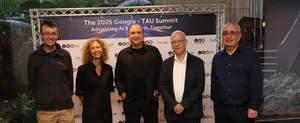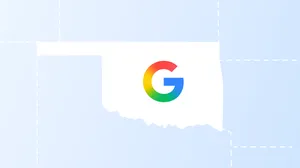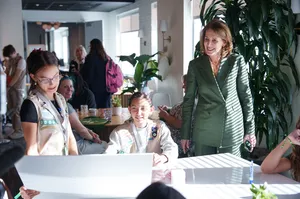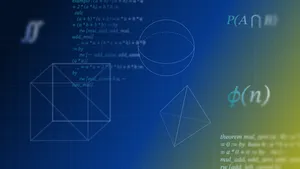When a crisis happens, Google.org's Alex Diaz steps up
After Hurricane Dorian struck the Bahamas last year, Alex Diaz and his colleagues at Google.org took action. A team of Google volunteers on the Google.org Crisis Connectivity team spent 80 days in the field, helping to bring back Internet connectivity in dozens of locations. Residents were able to access critical information, connect with family members and simply de-stress by going online.
More recently, Alex and his team worked with GiveDirectly for their Project 100 cash transfer project for COVID-19 relief. This time, the work he did was personal. “For many of my early years I lived with my biological mother,” he says. “We were often cash-strapped. Unplanned sudden financial shocks always had long-term ramifications.” During this ongoing crisis, he saw the immediate benefits of giving cash directly to families in need.
Alex leads the Crisis Response and Humanitarian Aid portfolio at Google.org. He manages Google’s philanthropic response to global crises, such as natural disasters and public health emergencies, providing nonprofits on the frontlines with funding, volunteers, and other support. Here’s how he explains the work he does, and how tech and philanthropy can work together.
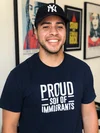
What does “crisis response” philanthropy mean at Google.org?
At our core, we back tech-enabled projects that help communities better prepare, respond and recover from crises. We make grants, encourage Googlers to donate (with a company match) and send our skilled volunteers to the communities that need it most. To have the greatest impact, we rely on strong partnerships with nonprofit organizations around the world which are preparing communities for disasters or delivering relief and recovery efforts. These organizations are the experts; we learn about their needs and search for where our philanthropic capital, coupled with technology, can help make the biggest difference.
How does Google.org approach a crisis?
We dedicate resources to stand with communities along the disaster cycle, from preparedness ahead of crises, to immediate relief after a crisis strikes, all the way through long-term recovery. Research continues to show that long-term support, particularly to local NGOs, is vital to a community’s recovery. Long after the media attention goes away, communities require ongoing, flexible funding to rebuild and to heal.
While philanthropy is important to support the efforts of frontline organizations, Google.org’s greatest asset is our technical talent. We often pair our grants with technical volunteers or pro bono support. One example is a project with GiveDirectly, in which we paired a $3 million grant with full-time support from Google engineers through the Google.org Fellowship program. That work supported a tool that will help target direct cash transfers to low-income families after a future U.S.-based natural disaster. The Google.org Fellows created a data-mapping tool that layers socioeconomic vulnerability data with disaster damage data to more quickly locate the pockets of highest need in an affected area.
We also help manage a team of volunteers under our Google.org Crisis Connectivity program, who go to disaster-affected places with partners like NetHope and ITDRC to install temporary internet connectivity in critical locations such as shelters, clinics and schools.
That sounds challenging. What’s the hardest part about your job?
My job can take a personal toll. Reading about and working on crises 24/7 can add up. In some form or another I’ve worked on crises since starting at Google in 2016, and while I’ve learned to process complex emotions on the job, I would be lying if I said there were not moments where crises got the best of me. Thankfully, our company provides employees with great resources to help, and our team has created a culture of support to navigate these moments effectively.
Another difficult aspect of the job is that even at a large company like Google, our resources will still never be enough to match the scale of global need every year. We can’t respond to every crisis, although we’d love to. So we look for the sweet spot where our philanthropy and technical expertise can make the most impact.
How has responding to COVID-19 been different from past crises?
For all disasters, the needs are normally greater than the resources we have at hand. This is especially true with COVID-19, and it is affecting everyone in every corner of the globe simultaneously. During “normal” crises such as natural disasters, responding organizations or governments often reallocate resources to different parts of the world or country to support affected areas. That isn't possible with a global pandemic. The needs are so vast, diverse and geographically diffuse. We’ve tried to stick to areas where we can use our expertise: health and science, distance learning and economic relief and recovery.
What’s your advice to people who are looking to donate money in a crisis? How about during the pandemic?
Ask yourself: Is the solution you want to support better, however you define better, than simply giving people the equivalent in cash? Direct cash transfers are efficient and effective. Research shows that cash has a strong track record in effectively supporting some of the most vulnerable communities, and recipients largely prefer it over traditional forms of aid. GiveDirectly led the way in testing the efficacy of direct cash transfers in the humanitarian sector and as a disaster relief tool.
With respect to COVID-19 relief, the needs are enormous. I’d encourage potential donors to pick their area of concern or passion, whether that is food assistance or support for our frontline healthcare workers, and to channel support locally or to the nearest area of greatest need. Everyone can do something. I think that's really the underlying message of this COVID-19 response—we're in this together.
We’ve learned from the way COVID-19 disproportionately affects Black and brown Americans that we’re really dealing with intersecting crises involving both health and race. How do you think about centering equity in your work?
I am Afro-Latinx. I have been the target of racial profiling by police. Even still, I am protected by my privilege of being lighter skinned. My heart goes out to my Black sisters and brothers who have endured so much pain through several difficult weeks, after several difficult months, after several horrifying centuries. What the world witnessed in an eight-minute video of George Floyd’s murder is the community’s everyday experience. Everyone needs to step up to ensure that equal justice under the law is more than just a value, but a reality. As Cornel West says, “justice is what love looks like in public.”
Equity is at the core of grantmaking at Google.org, and crisis grantmaking is no exception. To effectively respond to intersecting crises, we first need to acknowledge that race is a critical intersection. After we’ve acknowledged this reality, it is imperative to understand what it means and why, and to do this, we need data. Data that informs not only our understanding of the problem, but also what can be done to promote more equitable solutions. This is the primary motivation behind our recent $1 million grant and Google.org Fellowship to the Satcher Health Leadership Institute at the Morehouse School of Medicine.
The Morehouse team, with support from Google.org Fellows, is planning to assemble a data consortium and develop a platform to map data related to racial and ethnic groups, socioeconomic status, medical conditions and health system access at the county level in order to examine the trajectory of COVID-19 cases and deaths across the United States. This work will hopefully allow researchers and policymakers to understand the impact of the virus on communities of color and inform effective and equitable policymaking in government response efforts. This is just a tiny step of the many steps we as a society need to take to move our country closer to the ideals that bind us.


